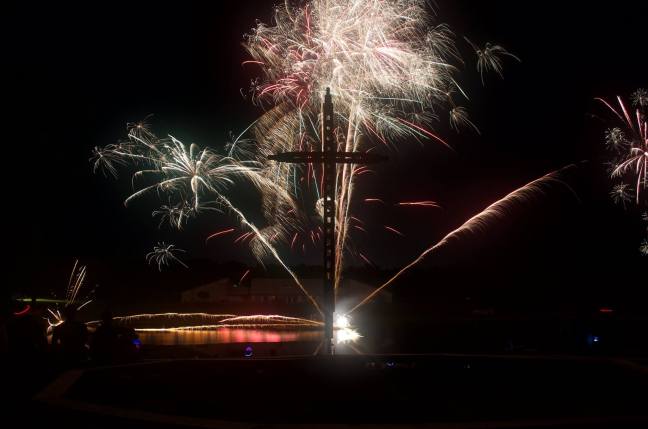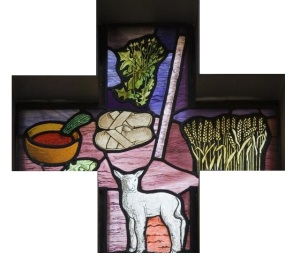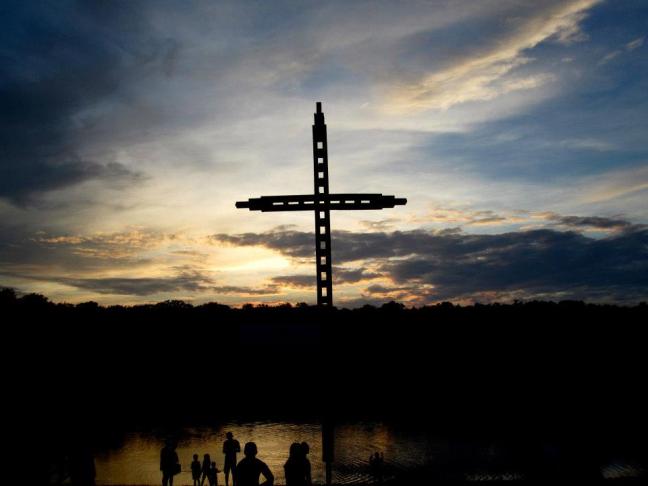
I grew up in a military family. We often observed the Fourth of July at or near a military installation.
I struggle to find words to express what these celebrations meant to me as a kid.
What made it so powerful was the convergence of many happenings all at once—history, energy, and expectation all gathering into one event.
We would barbecue with family and friends, eat watermelon, and explode Black Cats. We’d spread out a blanket on a field and catch fireflies before settling down for the fireworks show as a makeshift PA system broadcasted Lee Greenwood’s “Proud to Be an American.”
Like lines of melody and harmonies blended together, the whole experience was greater than the sum of its parts. We looked back at our national history and our small part in it. We looked around at our friends and our family, with whom we shared this story. We looked toward a future full of possibility. Each year, Fourth of July promised to be a flashback, zoom-in, and preview of our on-going story as Americans.

It’s hard to find words to describe the deep significance of Jesus’ last supper with his disciples and the on-going celebration of that supper. It’s the convergence of many things happening all at once that makes it so powerful:
The night of the Passover when the children of Israel were led in exodus out of Egypt; Jesus’ fulfillment of that event in the greater Exodus out of the power of sin and death; his presence with his disciples whenever they “do this in remembrance” of him; the celebration proclaiming “the Lord’s death until he comes,” (1 Cor 11:26) which leads his followers to cry, “Maranatha, our Lord come!” (1 Cor 16:22). The Lord’s Supper is simultaneously a flash-back, zoom-in, and preview of the on-going story of God’s people.
Flashback
The creator God had told Abraham,
“I will bless you … so that you will be a blessing. I will bless those who bless you, and him who dishonors you I will curse, and in you all the families of the earth shall be blessed” (Gen 12:2–3).
God promised to use Abraham’s family to undo the curse he laid on the creation. But Abraham’s family could not bear God’s blessing into the world as slaves in Egypt. So, God broke them out. Yahweh, the name God revealed to Moses in the burning bush, Yahweh broke Pharaoh’s power through a series of plagues, culminating in the tenth when he brought judgement “on all the gods of Egypt” (Ex 12:12). During this last plague, Yahweh protected his people by marking their houses with the blood of a lamb. Moses told them, “Yahweh will pass through to strike the Egyptians, and when he sees the blood on the doorposts, Yahweh will pass over the door and will not allow the destroyer to enter your houses to strike you” (Ex 12:23).

After 430 years, Abraham’s family was free from Egypt. However, the rest of the book of Exodus and the rest of the Old Testament makes it clear: Israel was still enslaved to a more sinister master—sin, death, and the power of the devil (John 8:34–44). Israel needed a greater Exodus through the blood of “Christ our Passover Lamb” (1 Cor 5:7).
When Jesus ate that Passover meal with his followers, he gave them the unleavened bread and told them, “This is my body, which is given for you … This cup that is poured out for your is the new covenant in my blood.” (Luke 22:19–20). Jesus was taking this history of Abraham’s family into himself and fulfilling it. Whenever his followers do this today, they witness a flashback into this history.
Zoom-In
Because Jesus is truly present in this meal (1 Cor. 11:27), those who celebrate today are not only remembering the past. They are participating in a present-tense event. Jesus is present, his body and blood mysteriously in, with, and under the bread and the wine.

The Bible doesn’t explain how Jesus can be present in both his human and divine nature. Lacking an explanation, some Christians have tried to provide one, as in the case of the Roman Catholic teaching on “transubstantiation.” Other Christians, unsatisfied with rational explanations, have concluded that Jesus is only present in a symbolic way. The Lutheran tradition has tried to follow the example of the early Christian Church by taking Jesus’ at his word even without an explanation. Jesus meant what he said, “This is my body … this is my blood” (Mark 14:22-24).
Social Implications
The true presence of Jesus in the Lord’s Supper is not simply an academic debate. For the Apostle Paul, the true presence of the Lord in the Supper gave the meal a center of gravity. Paul was angry with the Christians in Corinth because they were bringing their divisions to the Lord’s Supper. They were treating it like any other social engagement: “When you come together,” he says, “it is not the Lord’s supper that you eat. For in eating, each one of you goes ahead with his own meal. One goes hungry, another gets drunk.” He continues, “Whoever, therefore, eats the bread or drinks the cup of the Lord in an unworthy manner will be guilty concerning the body and blood of the Lord” (1 Cor. 11:20, 27). Paul warned the Corinthians: you are dishonoring your Lord who is present in his flesh and blood to host this meal.
Paul’s argument would hold no weight if the Lord were not truly present.
When we zoom-in on the Lord’s Supper, Paul teaches us to keep two relationships in view:
Individual
In the first place, the Lord is present to meet each of us personally. It is a dress rehearsal for Judgment Day. We are meeting the man God appointed to judge both the living and the dead (Acts 17:31). So, we must examine ourselves:
Am I sorry for my sins against God and my neighbor?
Do I want to be forgiven and stop sinning?
Do I trust in Jesus’ promise,
“This is my body, this is my blood shed for you for the forgiveness of sins”?
If I can’t answer yes, then I should not go to the Lord’s Supper. Instead, I should bring my doubts or questions to a trusted Christian friend, teacher, or pastor. If I go to the Supper in this state, it would not be to my benefit, but to my harm.
Communal
We see a second set of relationships when we Zoom-in on the Lord’s Supper. Paul’s anger with the Corinthians rose from his concern to see them lay aside their divisions and be united in one mind (1 Cor 1:10). For this reason, when I examine myself before receiving the Lord’s Supper, I should also ask,
“Am I willing to let this body of believers care for me, holding me accountable in thought, word, and deed, even as I do the same for them?”
This is not a private, spiritual ritual. It is a profoundly social and political act.
Preview
The Lord’s Supper is political because the people who celebrate it are proclaiming the coming of their crucified and risen King. The Supper is a preview of his coming to be the judge of those who are judged and the savior of those who are saved. Those who have refused the invitation to his table have refused his saving Lordship. Rejecting his promises, they have chosen the security and significance of some false god. God’s wrath against false gods is as fierce today as it was in Pharaoh’s day.
Signs of the New Creation
At the Lord’s coming, which his Supper proclaims, Jesus will take back God’s creation for good. He will fulfill the promise to Abraham and his family. He will restore the blessing to his creation. As a preview of this gracious takeover, Jesus is taking some select elements of creation in advance and using them as carriers of his blessing. He is taking water and using it to baptize. He is taking bread and wine and using them to deliver his body and blood for forgiveness and strength. He is leading us out of slavery and into the Promised Land of the New Creation.
Politics of Jesus
The Lord’s Supper is simultaneously a flashback, zoom-in, and preview. When I see it in this threefold light, I can think critically about how I celebrate the Fourth of July. I learn to frame the small story of America within the greater story of Jesus. The social experiment that we call the United States is a temporary political arrangement.
The body politic gathered around Jesus’ body and blood is permanent.
“… his kingdom will have no end” (Nicene Creed, quoting Daniel 7:14).

Acknowledgements
The photographs from Camp Lone Star at the beginning and end can be found on the camp’s Facebook page.
The “Last Supper” stained glass is installed at Durham Cathedral, U.K.
“Emblems of the Passover” stained glass is installed at the Church of the Blessed Sacrament, Gorseinon, U.K.
“Holy Communion” stained glass is installed at St Mary’s Church, Billerica, MA.
This document, principally authored by Professor Jeff Gibbs, helped me get a better grasp on the Lord’s Supper in general and the individual/communal dimensions in particular: “Admission to the Lord’s Supper”
